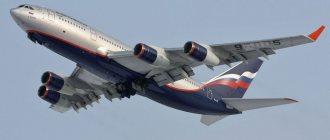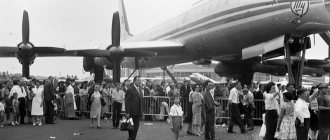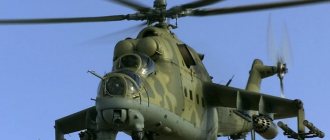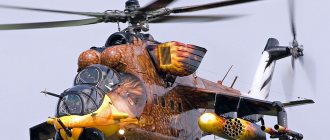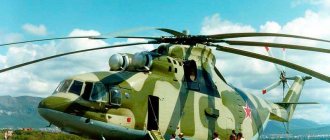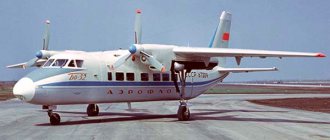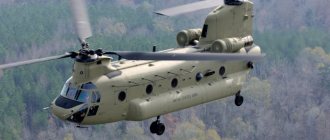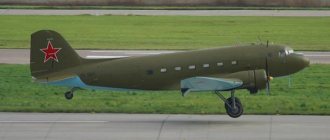The An-14 "Pchelka" aircraft , NATO code "Glyba" is a light transport aircraft designed to replace the "Kukuruznik" aircraft. Before the war, Antonov created his first aircraft - OKA-38, with a small take-off and landing, but it never entered mass production due to the outbreak of the war. And it seems that this “Stork” sunk into the designer’s soul, and he embodied its fundamentals in his Antonov An-14. This became his highlight in all aircraft - excellent takeoff and landing characteristics thanks to straight wings and propellers.
History of creation
The An-14 “Bee” aircraft began to be developed by designer Oleg Konstantinovich Antonov back in 1951. For a long time, the famous designer was unable to convince civilian or military customers that there was a need for such a multi-purpose, small-sized aircraft.
Finally, we managed to achieve a positive decision at the government level, and work on the project began.
- In 1956, a resolution of the USSR Council of Ministers on the development of the An-14. The work was supervised by Deputy Chief Designer A. Ya. Belolipetsky;
- In 1958, a prototype was created and tested in the same year;
- By 1960, three experimental “Bees” were created and state tests began. They ended in 1962. Such a long testing period is explained by the fact that changes had to be made to the project along the way;
- One of the tests was to fly an aircraft over a distance of more than 10,000 km with landing in 53 settlements. Moreover, the landing sites were chosen by the pilot from the air. It is worth noting that the car passed this test perfectly;
- In 1965, the first production An-14 was released.
From this point on, 340 aircraft were built, of which 20 were sold abroad. The last aircraft in the Soviet Union was produced in 1972, but in Poland the “Bee” modification of the An-28 aircraft was produced until 2013. It differs from the An-14 in its elongated fuselage, correspondingly larger interior and cargo capacity (17 people versus 7 on the An-14).
It is quite possible that Antonov in the An-14 realized his long-standing dream of creating a multi-purpose communications aircraft that could also carry out reconnaissance and transport small cargo and the wounded. A sample of such an aircraft was created in 1940, it was called OKA-38 “Stork”.
But the outbreak of war did not allow the matter to be completed, and the prototype was dismantled. And in the An-14 project, the idea of a small aircraft that did not require a special airfield for takeoff and landing was brilliantly realized.
I-14 a - experienced
In November 1928, aircraft designer N. Polikarpov was arrested and accused of counter-revolutionary activities. The court sentenced him to death. But the leadership of the USSR did not dare to carry out capital punishment: at that time there was a severe shortage of talented aircraft designers. N. Polikarpov continued work on aircraft design at TsKB-39 OGPU, which was located within the Butyrka prison in Moscow.
It was here in 1930 that N. Polikarpov, together with D. P. Grigorovich, created the I-5 biplane, which was put into mass production and put into service with the Red Army Air Force.
In 1931, the death penalty for the aircraft designer was replaced by exile to 10 years in the camps. However, after demonstration flights of the I-5 in front of the top officials of the state, Polikarpov was given an amnesty.
During the design of the I-14 fighter by P. Sukhoi, N. Polikarpov was entrusted with the development of the I-14 at AGOS TsAGI. After two years of work at AGOS, he was transferred to aircraft plant No. 39, where S.V. Ilyushin was the chief designer. A little later, within the walls of this institution, N. Polikarpov will design the I-16 fighter, which will become the main competitor of the Sukhov I-14.
light transport aircraft
| Oleg Konstantinovich Antonov |
In the second half of the fifties, An-2 aircraft could no longer cope with the rapid growth in the flow of passengers and mail on local airlines, or fulfill requests from state and collective farms for aerochemical work, fertilizing crops and pollinating orchards and vineyards. Taking this into account, Soviet aircraft designers quickly created several types of new machines to perform such work. One of them was developed in 1958 by a team headed by Oleg Konstantinovich Antonov. The new aircraft, which received the index An-14 and the name Pchelka in mass production, is a multi-purpose all-metal braced high-wing aircraft with two piston engines. The An-14 had a two-spar, caisson-type wing with a span of 22 meters and an area of 39.72 square meters, with automatic and controlled slats, double-slot retractable flaps and hovering ailerons. Such a mechanized wing provides the aircraft with a steep takeoff and landing trajectory, stable gliding at low speeds and high angles of attack, which is sometimes necessary when performing agricultural work. The plumage is two-keeled. The chassis is three-post, with a front wheel. With a maximum take-off weight of 3750 kg, the An-14 lifted up to 720 kg of payload into the air. In the passenger version, there are 6 seats in its cabin, the seventh passenger takes a seat next to the pilot. When performing agricultural work, a special tank for plant protection chemicals or fertilizers is placed in the fuselage. Bee, even with its relatively large size, can take off and land on very small unpaved airfields. To take off in calm conditions, a runway 100–110 m long is enough for it, and even 60–70 m in a headwind. The maximum speed of the aircraft is up to 200 km/h, cruising speed is 170 km/h. On March 15, 1958, flight tests of the An-14 twin-engine agricultural aircraft, called the Bee, began. It had two air-cooled piston radial engines designed by A. G. Ivchenko AI-14R, 260 hp each. With. every.
Three years later, the designers created an even more advanced version of the Bee An-14A. This aircraft uses AI-14RF engines with increased power to 300 hp. With. power. The Bee's wing is located in the upper part of the fuselage, reinforced with profiled struts to the lower wing, which is also the main landing gear struts. Wing profile R-PS. A slotted aileron is located in the outer part of the wing; on the left half-wing the aileron has a controlled trimmer. Between the inner end of the aileron and the fuselage, the entire trailing edge of the wing is occupied by a slotted takeoff and landing flap, which has a profiled nose slot to improve efficiency. On landing, the flaps are lowered by 40°, and during takeoff - by 20°. At the end of the wing, at the location of the aileron, a slat is strengthened, which in normal flight is pressed against the tip of the wing, and when flying at low speed, at extremely high angles of attack, it moves forward and thereby ensures smooth flow around the wing and normal aileron efficiency. The wing strut has a variable width: at the point of attachment to the main wing, its width is greatest, at the opposite end it is the smallest. At 45% of the length of the strut, counting from the main wing, there is one counter strut going to the main wing.
In the passenger version of the aircraft, the cabin has six comfortable seats (three in each row) and one passenger seat is located next to the pilot to his right. The glass of the side windows of both the passenger cabin and the pilot's cabin is made convex to improve visibility directly down. The cockpit is equipped with all modern radio and navigation equipment, which ensures flight in difficult weather conditions. Entry and exit from the cabin is carried out only through a double-leaf door that opens outward and is located below in the rear part of the fuselage at the point where the most capacious cabin compartment of the fuselage transitions into the tail boom. To control the elevator and ailerons, use a convenient steering wheel located in front of the instrument panel. To the right of the pilot is a console with control levers for the engines and wing mechanization.
Serial production of the An-14 began in 1965, but ended after seven years. 340 aircraft were built. The An-14 could not replace the more successful one, which was mass produced until 1992. Until recently, the An-14 could only be seen in a museum or in a landfill. However, in 1999
I-14 design
The fuselage of the I-14 is made as a monocoque with a four-spar design, which was integral with the center section. The fuselage skin consisted of sheet duralumin 0.5 mm thick. The rib braces, wing and center section spars walls were made of duralumin pipes, the spars flanges were made of chrome-molybdenum pipes. The cantilever wing is made up of a center section and two consoles. The wing frame consisted of two spars, six main and five additional ribs. The wing skin, which was 0.5 mm thick, used secret riveting technology. Landing flaps were also used in the design of the fighter. The set of main landing gear included disc brake wheels. The landing gear damping type was oil-pneumatic and was performed manually from the pilot’s cockpit. The crutch had a cable control.
Specifications
The An-14 is an all-metal braced high-wing aircraft. The wing is two-spar, caisson type, with two engines in engine nacelles. Mechanization is represented by double-slot flaps, ailerons and automatic slats.
Developed mechanization makes it possible to take off and land at low speed from limited areas. In flight, this is a guarantee of stable gliding at low speeds and high angles of attack.
The characteristics of the aircraft are summarized in the table:
| Name | Index |
| Length | 11.36 m |
| Height | 4.36 m |
| Weight without load | 2600 kg |
| Loaded weight | 3450 kg |
| Wingspan | 22 m |
| Crew | 1 person |
| Cruising speed | 180 km/h |
| Maximum speed | 210 km/h |
| Landing and take-off speed | 80 km/h |
| Calm mileage | 110 m |
| Running in light winds | 50 m |
| Maximum flight range | 680 km (with 7 passengers or 600 kg of cargo |
| Ceiling | 5000 m |
| Elevation gain of 5000 m | 48 min |
| Number of passengers | 7 people |
| Engine | AI – 14 |
Design features of the An-714 chassis
The chassis system was represented by three air cylinders of a toroidal structure. They were equipped with a rubberized fabric that was attached to the mounting point of the standard landing gear struts. On the top of each of the three cylinders a hydraulic motor of the GM-36 type was installed, which had a power of 22 horsepower. Rotors were attached to these engines; they rotated from the main engine through the rotor system. These installations weighed 28 kilograms.
These installations lifted the machine due to the rotation of the rotor, which created a high-pressure area in the cylinders. It was due to the pressure difference between the atmosphere and the inside of the cylinder that the plane rose to the pressure stabilization point. When the airbag was operating, an excessive amount of air escaped in the gap between the airbag itself and the surface on which the machine was standing. The designers' research showed that the pressure of these installations on the surface from which the lift is made becomes 0.07 kgf/cm², and this is a hundred times less than when using a conventional wheeled chassis.
To control an aircraft of this design, two crew members were needed. The An-714 aircraft had trapezoidal wings with a wing area of almost 40 square meters. The vehicle had a relatively small weight when empty - 4.5 tons. The power plant of the An-714 aircraft was a star-shaped piston engine of the AI-14 RF type. It provided the apparatus with a power of a thousand horsepower.
Taking into account all these characteristics, the aircraft could reach a maximum speed of 209 km/h and a cruising speed of 165 km/h. The maximum flight range when filling a full tank of 290 kilograms of fuel was 450 kilometers. The maximum height to which the aircraft could rise was 4.2 kilometers. A special feature is the rather short take-off run range - only 117 meters on concrete or ground. In addition, the aircraft could take off from snow cover 30 centimeters thick. In this case, the car only needed 130 meters.
An-714 characteristics:
| Modification | An-14Sh |
| Wingspan, m | 21.99 |
| Aircraft length, m | 11.36 |
| Aircraft height, m | 4.63 |
| Wing area, m2 | 39.72 |
| Weight, kg | |
| empty plane | 2720 |
| maximum takeoff | 3420 |
| fuel | 290 |
| engine's type | 2 PD Progress (Ivchenko) AI-14RF |
| Power, hp | 2 x 300 |
| Maximum speed, km/h | 209 |
| Cruising speed, km/h | 165 |
| Practical range, km | 450 |
| Practical ceiling, m | 4500 |
| Crew, people | 2 |
History of the airliner
Serial production of the aircraft began in 1965 and lasted until 1972. According to the summed up results, the An-14 was never able to replace the previous model, the An-2. A total of 340 copies of this airliner were built. However, the An-14 became the prototype for a new model range - the An-28, which continues to be produced in Poland today. In Ukraine, based on the An-14, the An-38 aircraft was designed and built.
The An-14 made its last flight in 1999 - it was a restored copy from a museum exhibit. However, this flight did not end in the most successful way - the plane landed in an area of unfavorable weather conditions, as a result of which it was decided to land at an alternate airfield, during which the An-14 hit a tree with its wing and crashed. The crew of this aircraft consisted of representatives of the aviation elite of Primorye.
This aircraft, popularly known as the “Bee,” had an incredibly difficult fate - no other aircraft developed at the Antonov design bureau has undergone so many improvements, edits and changes. HE was not recognized by critics and various commissions for a long time. The An-14 had to be promoted with great difficulty.
Aircraft design
The An-14 was developed as a multifunctional and unpretentious aircraft that could be used in various weather and climatic conditions and used for various purposes. For example, for the convenience of placing cargo on board, as well as for loading seriously wounded and bedridden patients, instead of a door in the rear section, a large cargo hatch was placed, through which crew members also entered the fuselage. The pilot used a separate front door.
The designers also provided for aerochemical work on this airliner, for which a special tank was designed in the fuselage for spraying chemicals. For state tests, which took place in the 1960s, a new modification of the An-14 was presented, which was distinguished by improved aerodynamic characteristics.
Operation was finally completed in 2002.
Funny story
The An-14 aircraft was presented to the Minister of Defense Malinovsky, who, just looking at it, dropped the following remark: “Yes, this is not a bee, but a whole bee. Let's see how it flies." After which a group of generals boarded the aircraft for a demonstration flight. It was this event that became the starting point for the serial production of the airliner, since it was followed by a short report, to which the Minister of Defense reacted as follows: “A wonderful plane. We need to put it into production."
After this, the aircraft underwent many more changes and modifications, after which it changed beyond recognition. It was also commissioned to develop an agricultural and military modification of the airliner.
Aircraft performance characteristics
It is noteworthy that for the An-14 to take off, a very short runway was enough: a distance of no more than 100 meters was enough for it to take off. The number of crew members was limited to one person - the pilot of the aircraft; up to seven passengers could be accommodated on board. Engine power - 240 horsepower.
The wingspan reaches almost 22 meters, and their area was 45.2 square meters. The maximum weight allowed for takeoff is 3.2 tons. The maximum commercial load was 720 kilograms. The length of the plane was quite short - only 11.1 meters.
The maximum flight altitude is 5600 meters. The maximum speed of the plane was 180 kilometers per hour; at a distance close to the ground, the maximum speed was 100 kilometers per hour. The improved modification of the aircraft had a new power plant consisting of more advanced turboprop engines, which in total reached a power of 350 horsepower.
The weight of the empty aircraft was 2600, with the maximum permissible load the weight was 3450 kilograms.
Aircraft operation
Thanks to its excellent takeoff and landing characteristics and specially designed landing gear of the same size, the aircraft could take off and land in such unprepared areas as: fields, snowy areas, wet dirt areas, sand.
Thus, the aircraft became universal and multifunctional and could be used in any situation. Pilots could even land on sites that they selected from the air while in flight.
I-14 bis - serial
The entire skin of the serial modification was made smooth, the landing gear was placed under the sides of the fuselage, and the wing began to be retracted by turning towards the consoles.
At first, the cabin was designed to be completely closed, sliding backwards, but after comments from the pilots, changes were made to its design. The cockpit was made open, and this affected the reduction in the maximum speed of the aircraft due to a decrease in the air flow rate.
The design used a serial American M-25 engine, the operation of which was not easy for Soviet pilots to get used to. The fighter was armed with 2 APK-11 cannons of 45 mm caliber and 2 ShKAS machine guns.
Unfortunately, production capacity was not enough to completely repeat the design of the prototype. The quality of serial production was worse than expected, which affected the flight characteristics of the aircraft.
After the appearance of the I-16 fighter, which was produced by N. N. Polikarpov’s design bureau, the Sukhov I-14 was abandoned. The I-16 was equipped with almost the same power plant, but had better flight characteristics compared to its predecessor.
At the P. Sukhoi plant, work was carried out to assemble 55 serial units of the I-14. Of these, only 18 were fully completed and put into service. These 18 aircraft received the designation I-14 bis, the rest remained unfinished.
Modifications
The very first prototype is known in aviation under the designation An-14. The serial one was called An-14A, it was on it that a forced engine was installed. But over time, new modifications were created that were adapted for specific purposes.
- The An-14B existed only as a draft. It differed from its relative in that it did not have a wing strut, and the tail looked like a Latin letter V. This model was supposed to use the Astazou turboshaft engine, produced by the French company Turbomeca. This is a type of single-shaft turboprop engine with two types of compressor: axial and centrifugal. The engine is quite powerful, but the idea of making the Bee a turboprop remained in the project.
- An-14V. Another modification, which also remained in the project, was supposed to install a GTD-350 turboprop engine. It was developed for the Mi-2 helicopter. Its adapted version was going to be used for the An-14 aircraft. Since 1964, mass production of this power plant has been carried out at a plant in the Polish city of Rzeszow.
- An-14M. This machine was made in one copy and took off only once - on April 30, 1968. The plane differed from its prototype in its elongated fuselage, had a door on the left side, and its landing gear was almost completely retractable. But the most important difference was that this project used the GTD-550AS engine. The power of this power plant was 640 hp. s., which is more than twice as much as its piston counterpart.
As you can see, most of the modifications of this aircraft remained at the project stage or, at best, reached the prototype level. The fate of the An-14Sh model stands out among these projects. The last letter indicates the chassis. This part of the aircraft is very important during takeoff and landing.
This model was developed specifically for the purpose of using an air cushion instead of a conventional wheeled chassis. The use of this type of landing gear further increased the capabilities of the aircraft, because then it could land and take off from almost any surface. Including from an unleveled primer or the shore of a lake or river.
The air cushion consists of an elastic rubber skirt, under which air is pumped, creating a layer of high pressure between the body of the vessel and the ground, which serves for movement.
I-14 tests
The first takeoff on the I-14 was made on May 27, 1933 by test pilot V. Buchholz in Moscow at the Central Airfield.
The deficiencies in the assembly were eliminated in less than a year, and already in the winter of 1933, combat testing of the device began. For this purpose, two I-14s were created, each with its own type of weapons. The first version received a PV-1 machine gun with a caliber of 7.62 mm and one APK-37 cannon under the wings. The second option was equipped with 2 PV-1 machine guns (7.62 mm), 2 ShVAK cannons, and 4 D-1 bomb racks.
The experimental aircraft had a transitional skin structure: the fin and fuselage were smooth, while the wing and the rest of the tail were corrugated aluminum.
In mid-1934, the second prototype was put up for testing, which was equipped with a Wright Cyclone-F2 engine (640 hp), and was armed with two APK-37 cannons and one PV-1 machine gun. State tests of this modification were carried out by test pilot Alexander Filin. It was this option that was taken as the basis for mass production.
An-14 Pchelka Speed. Dimensions. Weight. Capacity. Story. Load capacity
In the early 1950s. OKB Antonov has begun designing short take-off and landing aircraft (STOL). Before the An-14 aircraft appeared, several projects of such aircraft were developed. The SKV and Pchela aircraft projects remained on paper, although they were approved by the Air Force and TsAGI. “Each aircraft has its own destiny. Some are born easily, with universal approval, others make it with difficulty,” these are the words of OK General Designer Antonov. Antonov’s “long-suffering” brainchild also includes the An-14 “Bee” aircraft, as he called a small universal aircraft for agriculture.
None of the aircraft developed at the OKB under the leadership of OK Antonov has gone through such a thorny path or undergone so many metamorphoses as this small, cozy ultra-short take-off aircraft. Of all the designers, he was perhaps the only one throughout his life who sought to create aircraft that were not tied to such a complex and expensive structure as an airfield. The work was carried out in accordance with the resolution of the USSR Council of Ministers of May 24, 1956, under the leadership of A.Ya. Belolipetsky. When the Bees project was completed, the new management proposed increasing the number of passengers to 7 people. Initially, three cars were built, with some differences between them.
The An-14 aircraft made its first flight on March 14, 1958, piloted by LII test pilot V.N. Izgeim. The first car was used in factory tests. The aircraft was equipped with a three-bladed metal propeller and a straight stabilizer with rectangular fins at its ends. The second car already had a two-bladed wooden propeller and a stabilizer with a camber angle of 9°. The third aircraft had a large hatch in the tail for loading various cargo and chemicals for agricultural work. As an OK experiment, Antonov outlined 68 small settlements on the map, without asking whether there were landing sites there. The pilot was given the task of landing at each point no further than 200-300 m from the outskirts. Over three flights, the pilot visited all the designated points and completed the task.
I-14 – experienced
The design team under the leadership of P. Sukhoi received the decree on the development of an ultra-high-speed single-seat all-metal fighter in 1932. The design of such an aircraft was carried out in 1933 with the assistance of A. N. Tupolev.
The novelty of the design solutions was the retractable landing gear during flight, oil damping of the landing gear, and wheel braking system. They also placed emphasis on the centrally closed cockpit canopy and the smooth skin of the fuselage and wings. The prototype of the I-14 fighter was assembled at the Moscow experimental aircraft plant, which was then headed by A. A. Osipov. The aircraft was purged at TsAGI.
The first copy was equipped with a 500 hp Bristol-Merkur engine.
The entire vehicle received the designation I-14 (“fourteenth fighter”), its other name was ANT-31 (the initials of Andrei Nikolaevich Tupolev).
Links
Seaplanes An-4 Passenger toy-passenger An-10 • An-24 • An-28 • An-38 • An-140 • An-148 • An-158 Special purpose An-6 • An-30 • An-71 Transport and military transport An-8 • An-12 • An-22 “Antey” • An-26 • An-32 • An-34 • An-70 • An-72 • An-74 • An-74TK-300 • An-178 • An -124 “Ruslan” • An-225 “Mriya” Experimental An-714 • VP • Izdeliye 181 • LEM-2 • E-153 Projects A-6 • AE • An-3 • An-16 • An-20 • An-25 • An-30 • An-40 • An-42 • An-44 • An-50 • An-50 • An-77 • An-88 • An-112 • An-122 • An-128 • An-132 • An-142 • An-168 • An-170 • An-171 • An-180 • An-188 • An-218 • An- 325 • An-Bk-1_“Dove” • DT-5/8 • M • N • Bee • R • SKV • U Gliders A-1 • A-2 • A-3 • A-7 • A-9 • A-10 • A-11 • A-13 • A-15 • A-40 • BA-1 • BS-3 • BS- 4 • BS-5 • Golub • Lenin City • DiP • IM-1 • IP-2 • M-1 • M-2 • M-3 • M-4 • M-5 • M-6 • OKA-1 • OKA -2 • OKA-3 • OKA-5 • OKA-7 • OKA-8 • OKA-9 • OKA-12 • OKA-14 • OKA-21 • OKA-23 • PS-1 • PS-2 • Rot Front- 1 • Rot Front-2 • Mouth Front-3 • Mouth Front-4 • Mouth Front-5 • Mouth Front-6 • Mouth Front-7 • Mouth Front-8 • RE-1 • RE-2 • RE-3 • RE -4 • RE-5 • RE-6 • Standard-1 • Standard-2 • US-1 • US-2 • US-3 • US-4 • US-5 • US-6 • Six conditions SLA T2 This is a draft article about aviation. You can help the project by adding to it. : Incorrect or missing image This article lacks links to sources of information.
Information must be verifiable, otherwise it may be questioned and removed. You can review this article by adding links to authoritative sources. This tag was set on
April 21, 2013
.K:Wikipedia:Articles without sources (type: not specified)
The style of this article is non-encyclopedic or violates the norms of the Russian language.
The article should be corrected according to.
IL-14 cockpit
Similar
An-24 Engine. Dimensions. Range of flight. Practical ceiling. Story
IL-96 Speed. Dimensions. Capacity. Story. Load capacity
Tu-154 Speed. Dimensions. Weight. Capacity. Fuel consumption. Story
Yak-40 Engine. Dimensions. Capacity. Range of flight. Practical ceiling. Story
IL-62 Engine. Dimensions. Range of flight. Practical ceiling. Story
Tu-144 Engine. Dimensions. Range of flight. Practical ceiling. Story
IL-18 Engine. Dimensions. Range of flight. Practical ceiling. Story
IL-14 Engine. Dimensions. Story. Range of flight. Service ceiling
An-2 Engine. Dimensions. Story. Range of flight. Service ceiling
An-148 Speed. Price. Dimensions. Story. Capacity. Fuel consumption
An-14 Pchelka Speed. Dimensions. Weight. Capacity. Story. Load capacity
Tu-114 Speed. Dimensions. Weight. Capacity. Story. Load capacity
Yak-42 Speed. Dimensions. Capacity. Fuel consumption. Story. Range of flight
IL-114 Engine. Dimensions. Range of flight. Service ceiling
An-3 Engine. Dimensions. Range of flight. Service ceiling
Yak-12 Speed. Dimensions. Weight. Story. Capacity. Load capacity
Tu-334 Speed. Dimensions. Weight. Story. Capacity. Range of flight
Yak-52 Engine. Dimensions. Range of flight. Service ceiling
Tu-204 Engine. Dimensions. Range of flight. Practical ceiling. Fuel consumption. Price
Tu-104 Engine. Dimensions. Story. Range of flight. Service ceiling
Su-29 Engine. Dimensions. Range of flight. Practical ceiling. Story
IL-86 Engine. Dimensions. Range of flight. Service ceiling
Tu-134 Speed. Dimensions. Capacity. Fuel consumption. Story. Range of flight
Su-31 Speed. Price. Dimensions. Story. Load capacity
Tu-124 Speed. Dimensions. Capacity. Weight. Story. Range of flight
An-10 Speed. Dimensions. Weight. Story. Capacity. Load capacity
An-140 Speed. Price. Dimensions. Capacity. Fuel consumption. Story
Be-30 / Be-32K Engine. Speed. Dimensions. Range of flight. Service ceiling
An-38 Speed. Dimensions. Weight. Story. Capacity. Range of flight
Be-103 Speed. Price. Dimensions. Weight. Story. Capacity
IL-103 Engine. Dimensions. Capacity. Load capacity. Range of flight. Service ceiling
Su-26 Engine. Dimensions. Range of flight. Service ceiling
Yak-58 Speed. Dimensions. Weight. Story. Range of flight. Service ceiling
ANT-20 Maxim Gorky Speed. Story. Engine. Dimensions. Range of flight
LK-1 (NIAI-1 Plywood-2) History. Dimensions. Engine. Range of flight
MiG-8 Duck Engine. Dimensions. Story. Range of flight. Service ceiling
Tu-110 Engine. Dimensions. Range of flight. Practical ceiling. Story
Aviatika-MAI-890 Engine. Dimensions. Speed. Range of flight. Service ceiling
Yak-50 Speed. Dimensions. Story. Range of flight. Service ceiling
Yak-55 Speed. Dimensions. Weight. Story. Range of flight. Service ceiling
ANT-35 (PS-35) Engine. Dimensions. Story. Range of flight. Service ceiling
IL-12 Engine. Dimensions. Story. Range of flight. Service ceiling
Airplane K-5 Engine. Dimensions. Story. Range of flight
Yak-53 Dimensions. Range of flight. Weight. Service ceiling
KhAI-1 Engine. Dimensions. Story. Range of flight. Service ceiling
MAI-223 Kitten Photo. Video. Characteristics. Engine
AIR-6 Engine. Dimensions. Story. Range of flight. Service ceiling
PS-89 (ZIG-1) Engine. Dimensions. Story. Range of flight. Service ceiling
SAM-5 Engine. Dimensions. Story. Range of flight. Service ceiling
Airplane Steel-3 Engine. Dimensions. Story. Range of flight
Airplane ANT-1 Engine. Dimensions. Story. Range of flight
Airplane K-1 Engine. Dimensions. Story. Range of flight
Airplane U-8 Little Humpbacked Horse History. Dimensions. Engine
You have no rights to post comments
Application
Sometimes the Bee is called a competitor to helicopters because of the aircraft’s ability to take off and land with a short takeoff and in places where there are no airfields.
Such capabilities of the machine made it possible to use it in various areas of air transportation:
- for delivery of small cargo;
- postal transportation;
- as passenger air transport;
- as ambulance transport;
- performing agricultural work (spraying chemicals and fertilizers over fields);
- pollination of gardens.
In order to carry out work on pollination or spraying of chemicals, fertilizers, a tank is installed in the fuselage, into which the necessary substance is poured.
When the aircraft is used as a passenger aircraft, six seats are installed in the cabin. A seat next to the pilot is provided for the seventh passenger. The windows of the windows are specially made convex to make the view more comfortable. The cabin has all the necessary equipment: navigation aids, radio communications.
Long-range (strategic) aviation
Long-range aviation is a means of the Supreme Commander-in-Chief of the Russian Armed Forces and is intended to solve strategic, operational-strategic and operational tasks in theaters of military operations (strategic directions). Long-range aviation is also a component of the triad of strategic nuclear forces.
The main tasks performed in peacetime are deterrence (including nuclear) of potential adversaries; in the event of the outbreak of war - the maximum reduction in the military-economic potential of the enemy by hitting his important military installations and disrupting state and military control.
The main promising areas for the development of long-range aviation are maintaining and increasing operational capabilities to carry out assigned tasks as part of the strategic deterrence forces and general purpose forces through the modernization of aircraft with extension of their service life, the purchase of new aircraft (Tu-160 M), as well as the creation of a promising long-range aviation complex PAK-DA.
The main armament of long-range aircraft is guided missiles, both nuclear and conventional:
- Kh‑55 SM long-range strategic cruise missiles;
- aeroballistic hypersonic missiles X-15 C;
- operational-tactical cruise missiles X‑22.
As well as free-falling bombs of various calibers, including nuclear ones, disposable cluster bombs, and sea mines.
In the future, it is planned to introduce high-precision cruise missiles of the new generation X-555 and X-101 with significantly increased range and accuracy into the armament of long-range aviation aircraft.
Bomber aircraft as part of long-range aviation
The basis of the modern aircraft fleet of long-range aviation of the Russian Air Force are missile-carrying bombers:
- strategic missile carriers Tu-160–16 units. By 2022, it is possible to supply about 50 modernized Tu-160 M2 aircraft.
- strategic missile carriers Tu-95 MS - 38 units, and about 60 more in storage. Since 2013, these aircraft have been modernized to the level of the Tu-95 MSM in order to extend their service life.
- long-range missile carrier-bomber Tu-22 M3 - about 40 units, and another 109 in reserve. Since 2012, 30 aircraft have been modernized to the Tu-22 M3 M level.
Modifications
| Model name | Brief characteristics, differences. |
| An-14 | Prototype. It was distinguished by AI-14 engines with a power of 240 hp and a rectangular wing. 2 aircraft were manufactured. |
| An-14A | Third prototype. It featured AI-14RF engines and a V-shaped stabilizer with rectangular washers. First flight in the spring of 1960. |
| An-14A | Serial. It was distinguished by a trapezoidal wing of increased span, an elongated nose of the fuselage, and three-bladed propellers. First flight May 3, 1965. Produced in 1965-1970. |
| An-14B | Modified (draft). It featured improved aerodynamics, a V-shaped tail, and no wing strut. Developed in 1963. |
| An-14B | From the French Astazu theater (project). |
| An-14V | With a GTD-350 theater engine with four-blade propellers (project). Developed in 1962. |
| An-14L (An-28 is the first with this name) | From the French Astazu theater (project). |
| An-14M | Upgraded, prototype An-28. It was distinguished by its GTD-550AS (later TVD-850) engines, elongated fuselage, wing design, door on the left side, semi-retractable landing gear, and the shape of the keel washers. Made in one copy. First flight April 30, 1968. |
| An-14Sh | Flying laboratory for testing hovercraft landing gear. Converted from the production An-14A in 1980. First flight in early 1983. |
| An-30 (the first with this name) | With GTD-350 engines (project). It was distinguished by screws connected by the transmission. The number of seats for passengers has been increased to 15. |
| An-714 | With hovercraft landing gear (experienced). Developed at the Kuibyshev Design Bureau for aircraft and helicopter chassis. First flight October 20, 1970. |
| "Gull" | Agricultural (project). Developed in 1963. |
Operators[edit]
An-14 operators
Afghanistan
- From 1985 to 1991, the Afghan Air Force operated 12 aircraft.
Bulgaria
- Balkan Bulgarian Airlines
East Germany
- East German Air Force
Mongolia
- Mongolian People's Air Force - two from the early 1970s to 1980.
Guinea
- Military of Guinea
Yugoslavia
- Center Letalski Maribor - civilian operator [ citation needed
]
Soviet Union
- Soviet Air Force
- Aeroflot
